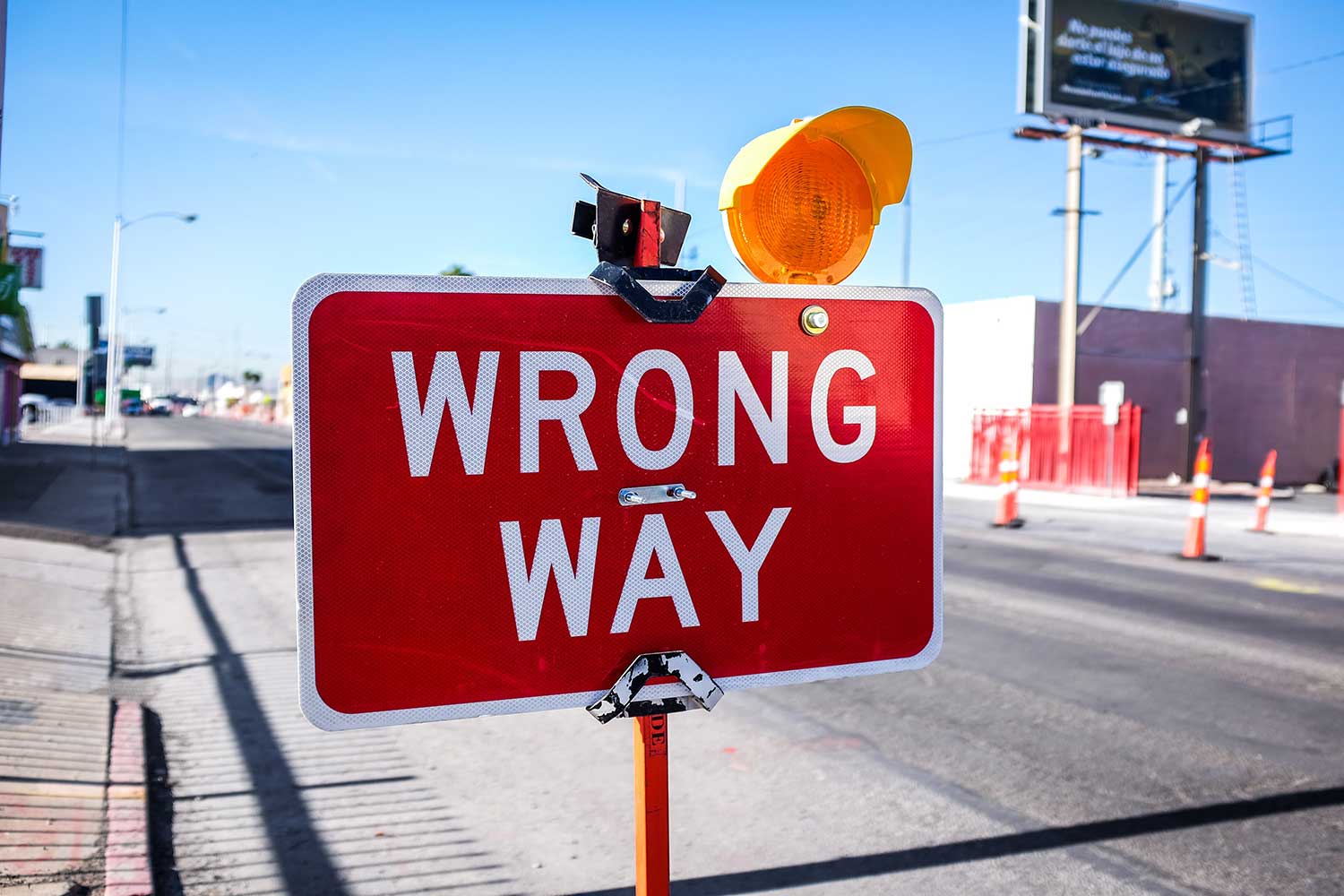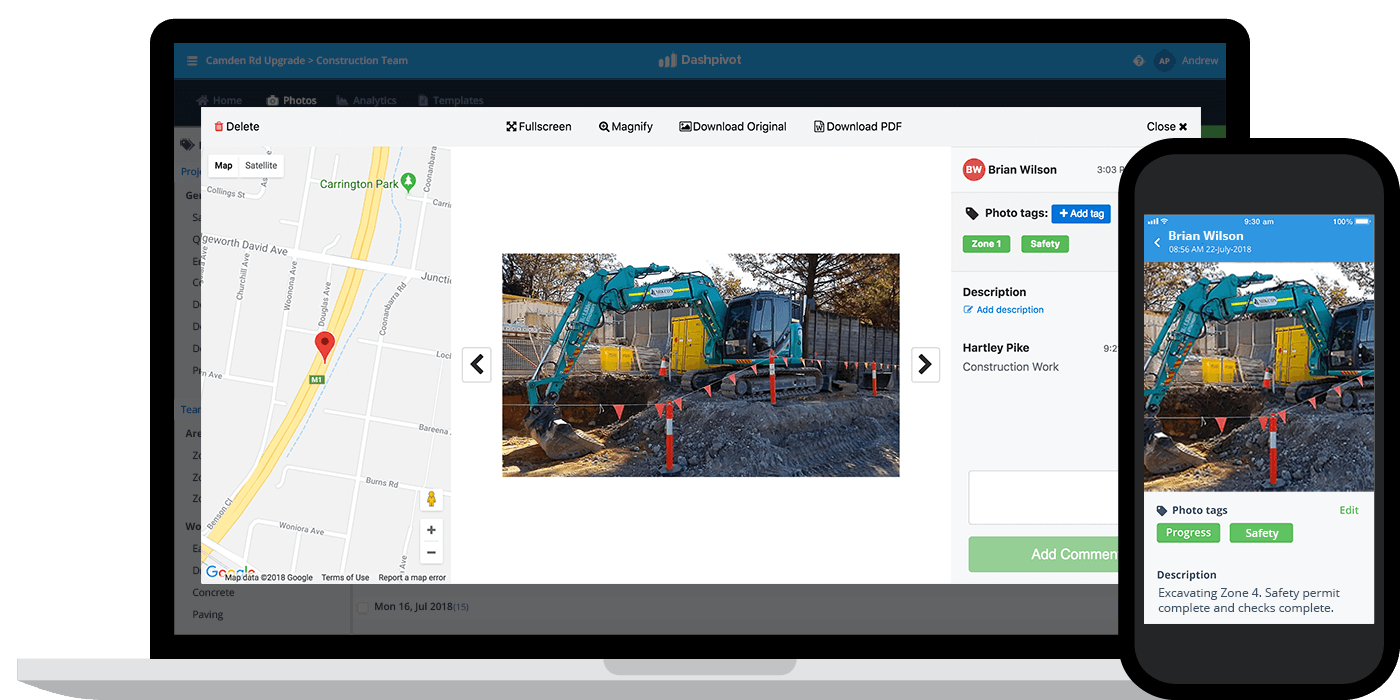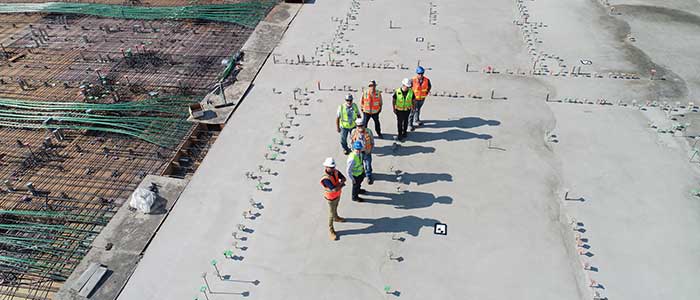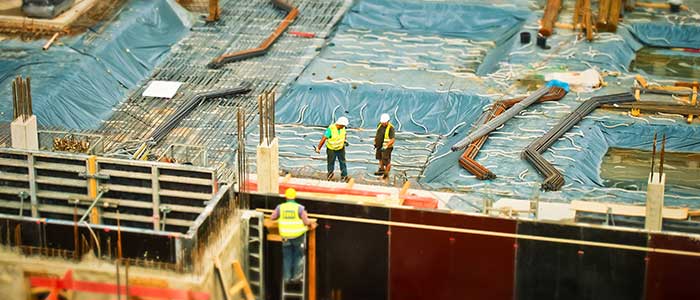Safety – Construction site safety rules

Construction site safety rules sample
The important role of construction site safety rules
Construction sites are some of the most dangerous job 'sites' in the world, with construction companies and workers being involved in countless incidents, injuries and fatalities each year.
Construction companies work hard to keep their workers safe in a number of ways and through a number of different mechanisms.
Construction site safety rules are one of the most common and simplest way of ensuring a minimum level of safety etiquette and performance - and they work for a number of reasons:
- Site safety rules make it clear (at a high level) what is expected and accepted on site
- They hold people accountable to how they conduct their activities (you can't make excuses if site safety rules are plastered over the walls)
Construction safety procedures and processes create the formal structure of how construction companies do work safely in-line with other facets of the business, but site safety rules cover the site specific safety rules which govern every day behaviour and are often the first line of safety defence.
Like many sets of rules, some site safety rules can be quite obvious, while others are more unique to a specific project or activity. Companies usually have a standardised set of company, project and site rules which cover all of their sites - while they create site specific safety rules and make adjustments based on each job.
Contractors usually create the site safety rules, which subcontractors and other parties must adhere to and comply with when entering and conducting work on site. The contractor outlines the site safety rules in the safety management plan - as well as making them available to other parties, in offices, around site etc.
The contractor is then responsible for their implementation and monitoring, while each party should also be paying attention to and recording the safety performance of their people and activity.
Safety is a joint effort and endeavour on construction sites, and it's critical that all companies and stakeholders come together to discuss, brainstorm and action any safety issues or topics which arise.
Below are some construction site safety rule samples, which outline a number of relatively generic safety rules which you can use or copy for your own sites - while adjusting and appending them where necessary.
Construction site safety rules sample
This construction site safety rules sample features sample rules which are generally applicable to most construction sites and site activities. It's not intended to be comprehensive nor custom for your projects and activities.
Site inductions - All workers working on the site must attend a workplace induction. Visitors that have not been inducted must be accompanied and under the control of a competent person at all times.
SWMS (Safe work method statements) - A safe work method statement must be used for all high risk construction activities
Personal Protective Equipment - Use personal protective equipment in accordance with manufacturer’s instructions and where directed by the principal contractor and in accordance with site signage.
Accidents and Incidents - Accidents, incidents and injuries must be reported immediately to the contractor’s and applicable subcontractor’s site representative in charge.
Alcohol and Drugs - The consumption of or being under the influence of alcohol and illegal drugs on the site is strictly prohibited.
Tidiness - Maintain all site amenities in a clean, tidy and hygienic state.
Site management plan - Refer to the Site Management Plan for full requirements for this project and site, site specific hazards and other safety issues.
First aid - All persons requiring first aid treatment must contact the first aid officer who will administer the treatment and record the injury in the injury or incident register.
Hazardous Substances - Hazardous substances and hazardous chemicals must be used and stored in compliance with up to date Safety Data Sheets (SDS) and hazardous substance registers.
Leads and powertools - All leads, power tools and electrical equipment must be inspected and tagged by a qualified person prior to their use.
Behavior - No unsafe or dangerous behaviour such as pranks and bullying.
Fatigue and tiredness - Persons must have a break of at least 10 hours before the start of shift - and persons must to declare when they feel fatigued.
Public access - Implement security measures to prevent unauthorised access to the construction area including barricades and temporary fencing.
Noises - All noise levels to be minimised and maintained below 85db. Notification is required if noise level is to be exceeded and ensure protective measures are in place.
Electricity - No energised work – except for testing, and undertake a risk assessment and isolate the work area before commencing work.
Certificates of competency - All persons on site must carry certificates of competency on them and present on request.
Body jewellery - Jewellery items that are conductive or may become entangled are not to be worn.
The list of construction site safety rules can go on and on, but this framework and these ideas should be a good start for creating and displaying your construction site safety rules.
How to best track safety to know whether your rules and procedures are being followed
Ensuring that your construction site safety rules are followed and 'obeyed' is a balancing act. You want to make sure that people are conducting their work safely and in accordance with your site safety rules, but you don't want to create a culture of 'big brother', lack of trust and direct oversight.
This is not an easy balance to find. The best outcome for you as a company and for your workers is to create a culture of safety whereby every one of your workers participates in encouraging people to do work safely - and where each person holds every other person to a high standard of safety.
You create this culture by having open safety talks, safety moments and encouraging safety participation openly. People often feel self-conscious about talking about safety rules and reporting safety rule breakages. It takes a conscious effort to make people feel comfortable about discussing these issues.
The other major part of the safety rules equation is how easy you make it for people to capture, organise and track safety processes, rules and regulations.
Many companies throw the entire rule book at people and expect them to log issues and problems in paper folders. This makes it hard and time-consuming for people to report on and track what's happening on site.
You can streamline these process with smart safety software, which makes it easy for people to capture what's happening directly on site - through digital forms and photos.

By being smart about how people capture and report on site safety and site safety rules, you will see better safety participation and get more hazard reports, safety incident reports and have better safety records for your sites and projects.
Over time, your company will be able to use this detailed and organised information to analyse what's happening and understand how to improve.
Construction site safety rules are just one of your site safety tools - but they are an important staple of overall site safety.
New employees and site inductees can reference the site safety rules while they hold workers who may become complacent to maintaining the standards written down in 'stone'.
There are plenty of things you can do to improve construction site safety, and putting some time and effort into your site safety rules and how they are shared and implemented is one of the most effective.
Others include safety toolbox talks and regular site inspections. If you are interested in either of these, take a look at the free templates below.
People in 80+ countries use this safety management system to improve their safety processes and outcomes.


